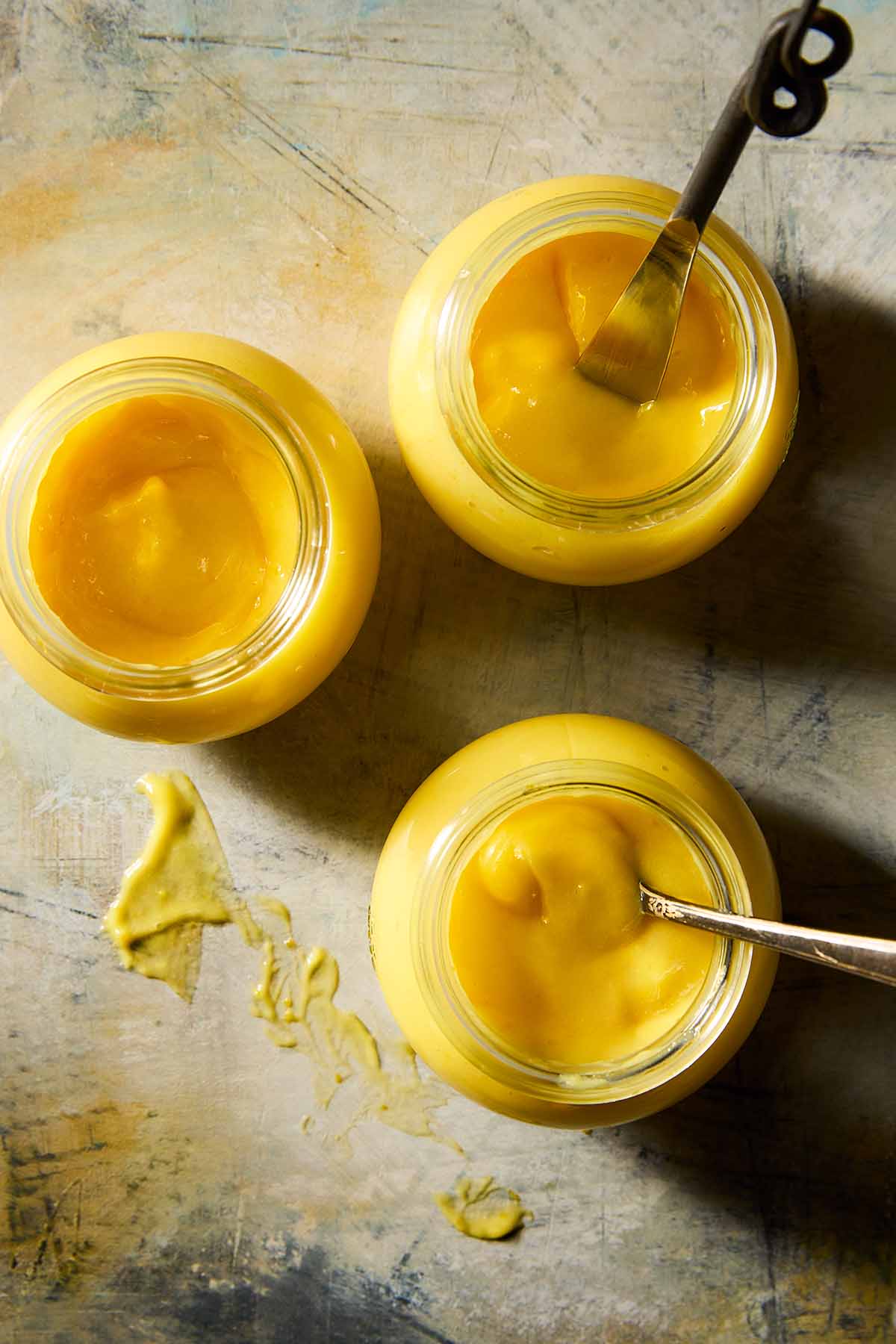
This post was republished on Jan 25, 2025 to include new photos, new steps, FAQs, tips, and serving and gifting suggestions.
Meyer lemons are a winter fruit that are at their peak in January and February. Whenever I find them at the store, I grab several bags, rush home, and make this curd as well as Meyer lemon marmalade.
This January, I made a double batch, and The One and I have been spooning curd on everything. It adds just the right amount of sweetness and bright citrus notes to a bowl of blah winter blueberries. The One surprised me by smearing it on peanut butter-covered cinnamon raisin bread. I thought it was wicked weird, but honestly, it tasted pretty amazing.
With so much curd in the fridge (7 jars!), I whipped up a batch of buttery brioche buns just so we could slather them with curd. And STILL, we hadn’t eaten through our stash, so I baked my old-fashioned coconut cake and spooned the curd between the layers. Divine!
Jump To

Why Our Testers Loved This
Along with the testers, David loved that this Meyer lemon curd was “lusciously delicious and smooth” and slightly sweeter than regular lemon curd.
Notes on Ingredients
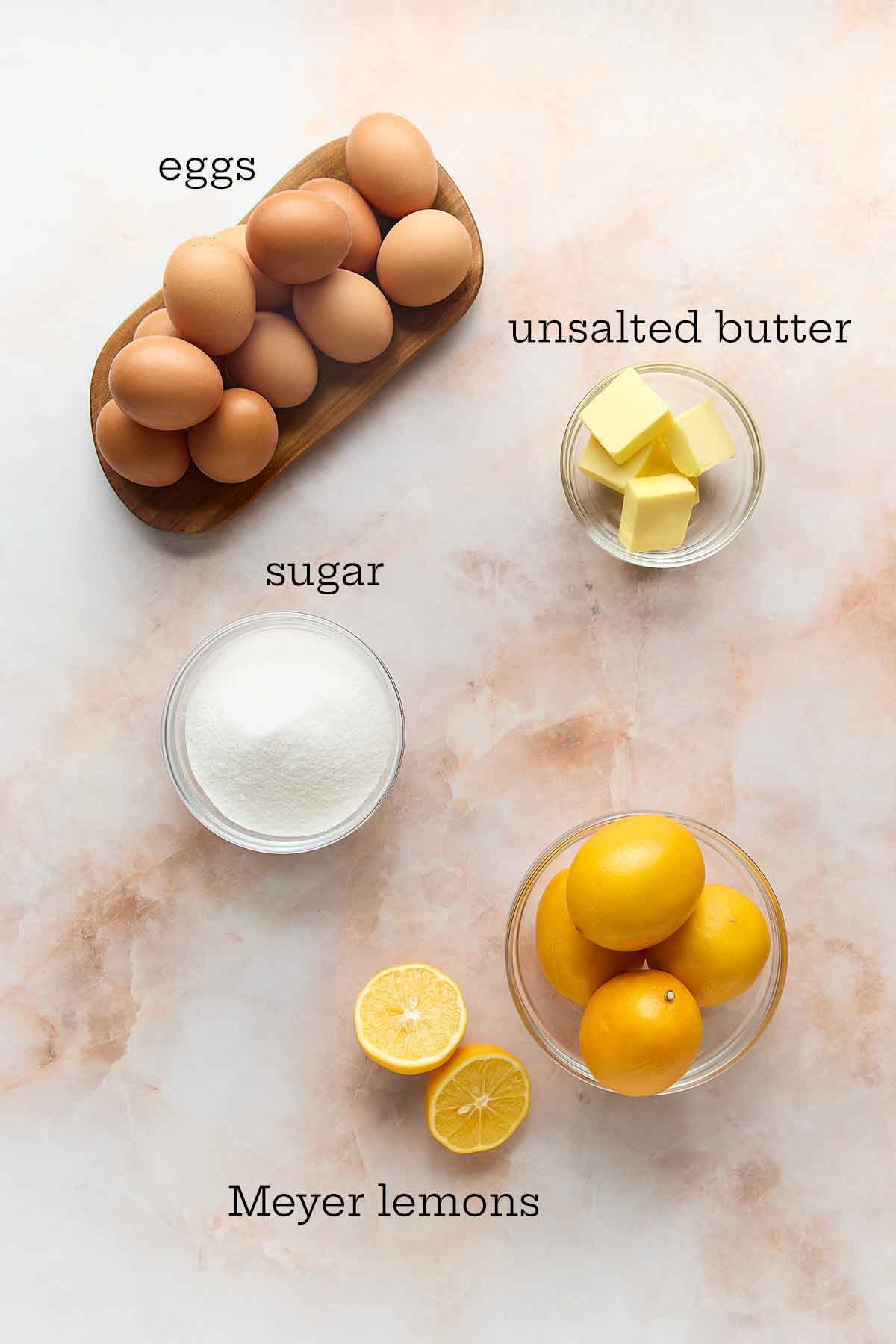
- Egg yolks–Save your extra egg whites for making meringue cookies.
- Meyer lemon zest–If you don’t want to include the zest in your finished curd, see the FAQ below on how to use it. You can strain it out after cooking.
How to Make This Recipe

- Whisk the egg yolks, eggs, and sugar together.
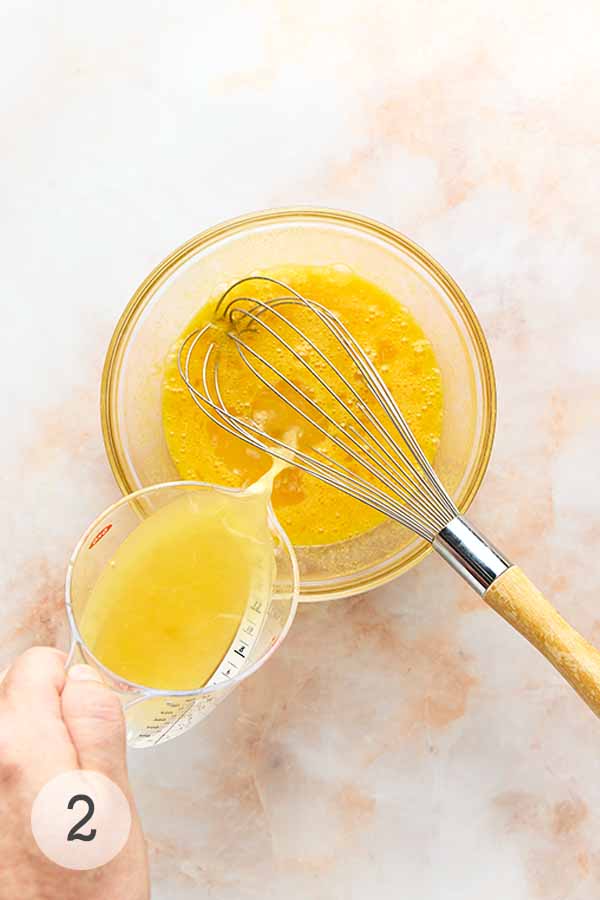
- Whisk in the lemon juice.

- Cook the mixture in a double boiler until the curd reaches 170°F.
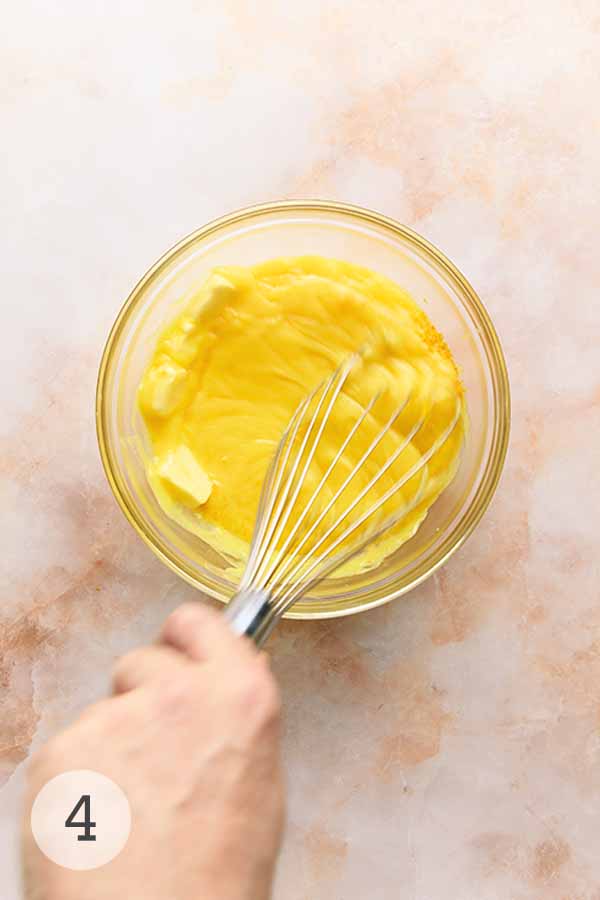
- Strain the curd into a bowl. Whisk in the lemon zest and butter until smooth.

- Ladle the curd into the prepared jars, leaving 1/2 inch headspace.
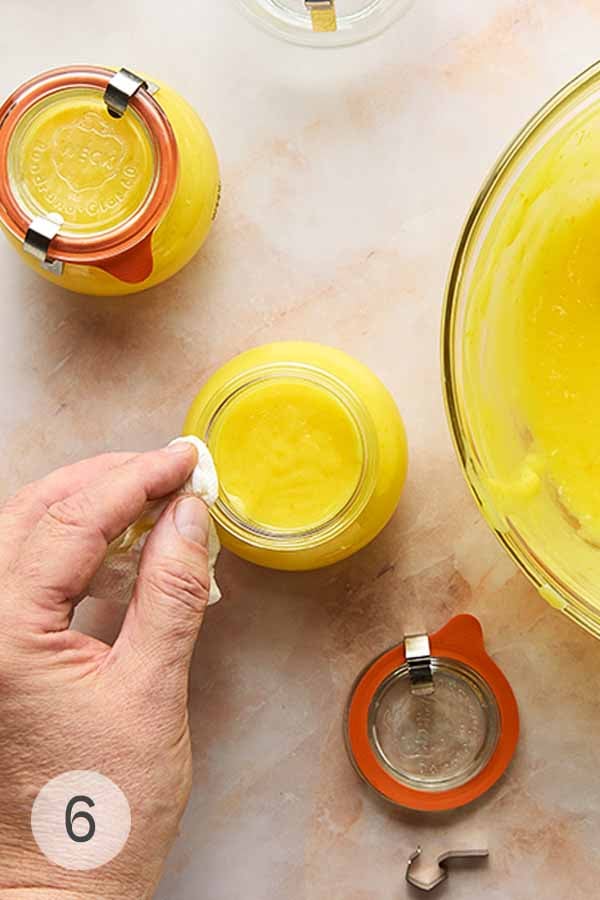
- Wipe the rims, seal the jars, and refrigerate until the curd is chilled.
Your Meyer Lemon Curd Questions Answered
Meyer lemons are a cross between regular lemons and mandarin oranges. They are smaller, more round, and sweeter than regular lemons, with a thinner, smoother skin.
Yes, you can still impart a distinct and luscious Meyer lemon-y-ness to the curd and end up with impeccably smooth results by adding the zest a little earlier in the process and then straining it out. We propose adding the zest to the sugar before you whisk in the eggs and egg yolks, rubbing the sugar and zest mixture between your fingertips to really permeate and perfume the sugar with a lemony lilt. (Do note, if you strain the curd, your yield will be closer to 3, not 4, half-pint jars.)
Certainly. Keep in mind that the sugar content of citrus varies, so you may need to adjust your sugar accordingly. One reader tried it with navel oranges, and found that the resulting curd tasted just like an orange creamsicle!
Yes, you can process the lemon curd in a hot water bath for 15 minutes, however, you must still store the processed curd in the refrigerator. It will keep for up to 3 months, but once opened, use with in a week.

Pro Tips
- The curd can be stored for up to 1 week in the refrigerator. It can be frozen for up to 1 year. Thaw overnight in the fridge and use within 1 week.
- To determine if your curd is ready, use an instant-read thermometer. Curd is ready when it reaches 170°F.
- This recipe is suitable for a gluten-free diet.
- To make Meyer lemon mousse, transfer all of the lemon curd to a medium bowl. Whip 2 cups of heavy cream along with 3 tablespoons of confectioners’ sugar until soft peaks form. Using a silicone spatula, fold a glob of the whipped cream into the lemon curd to lighten it, then gently fold in the rest of the whipped cream. Spoon the mousse into parfait glasses, alternating layers with fresh berries of your choice.
How to Gift this Curd
Tie each jar with raffia or ribbon and attach a card. To turn this into a gift basket, consider including baked blueberry scones, cream biscuits, or even a loaf of poppy seed cake. It’s a perfect hostess gift—ready to be enjoyed at breakfast, at teatime, or for dessert.
What to Serve with This Lemon Curd
Where to begin?! Slather this on toasted brioche, buttery Scottish shortbread, an angel food cake served with fresh strawberries, or on warm-from-the-oven cream scones. The curd is simply outrageous when layered with raspberries and blueberries for a summertime parfait. The One and I also love the contrast of citrus with chocolate in this stunning Meyer lemon tart.
Write a Review
If you make this recipe, or any dish on LC, consider leaving a review, a star rating, and your best photo in the comments below. I love hearing from you.–David
This is a delicious curd to say the least. Very rich, creamy, neither too sweet nor too tart – just a lovely lemony curd with a hint of a floral note.
tamiko

Meyer Lemon Curd
Equipment
- Instant-read or a candy or a deep-fry thermometer and 3 or 4 half-pint jars with lids.
Ingredients
- 6 large egg yolks, at room temperature
- 6 large eggs, at room temperature
- 1 1/2 cups granulated sugar
- 1 cup freshly squeezed Meyer lemon juice, (from about 6 lemons)
- 2 tablespoons grated Meyer lemon zest, (from about 4 lemons)
- 6 tablespoons (3/4 stick) unsalted butter, cut into pieces
Instructions
- Wash the jars and lids in hot, soapy water and dry thoroughly. Alternatively, run the jars through the regular cycle of your dishwasher and wash the lids by hand.
- In a large bowl, whisk together the egg yolks, eggs, and sugar. Whisk in the lemon juice. Transfer to a double boiler and cook the curd over barely simmering water, whisking constantly, until the lemon mixture thickens and reaches 170°F (76°C) on an instant-read thermometer. (The mixture will be very foamy on top.)
- Remove the pan from the heat. Strain the curd into a bowl. Immediately whisk in the lemon zest and butter until the mixture is smooth and emulsified.
- Using a wide-mouth funnel and filling one jar at a time, ladle the sauce into the prepared jars, leaving 1/2 inch headspace. Wipe the rims clean, seal the jars, and refrigerate until the lemon curd is thickened chilled through before using, at least 4 hours.
Notes
- Make Meyer lemon mousse–Transfer all of the lemon curd to a medium bowl. Whip 2 cups of heavy cream along with 3 tablespoons of confectioners’ sugar until soft peaks form. Using a rubber spatula, fold a glob of the whipped cream into the lemon curd to lighten it, then gently fold in the rest of the whipped cream. Spoon the mousse into parfait glasses, alternating layers with fresh berries of your choice.
- Storage–Lemon curd can be stored in the fridge for up to 1 week or frozen for up to 1 year. Thaw overnight in the fridge before using.
- Substitutions–This can be made with other citrus fruits, but you may need to adjust the amount of sugar, depending on the sweetness of the fruit.

Nutrition
Nutrition information is automatically calculated, so should only be used as an approximation.
Recipe Testers’ Reviews
The curd is very delicious, but I think you can get pretty much the same result using regular lemons. Personally, I prefer a very smooth curd, so I’d add the zest during the cooking process and then strain it afterward. (I don’t think you’re compromising the flavor at all if you remove the zest.)
I made the mousse with fresh berries, and it was quite good, although very, very rich—I’d say a step or two away from cloying. Next time, I’ll use a higher proportion of berries to mousse to cut down on the richness of this dessert.
This curd is lusciously delicious and smooth. Being a Meyer lemon curd, it lacks some of the puckery tartness of traditional lemon curds, and that’s a good thing. It’s a bit sweeter, like the flavor of a lemon and a tangerine lovechild.
It did take awhile for the curd to reach 170°, but I like making it in a double boiler—it reduces the chance of any curdling. If you like a perfectly smooth curd, add the zest with the eggs, sugar, and juice, and then strain it.
Me, I was perfectly fine with the tiny bits of bitter zest; it balanced the sweetness of the curd. We had it spooned over David Lebovitz’s best brownies. Decadent.
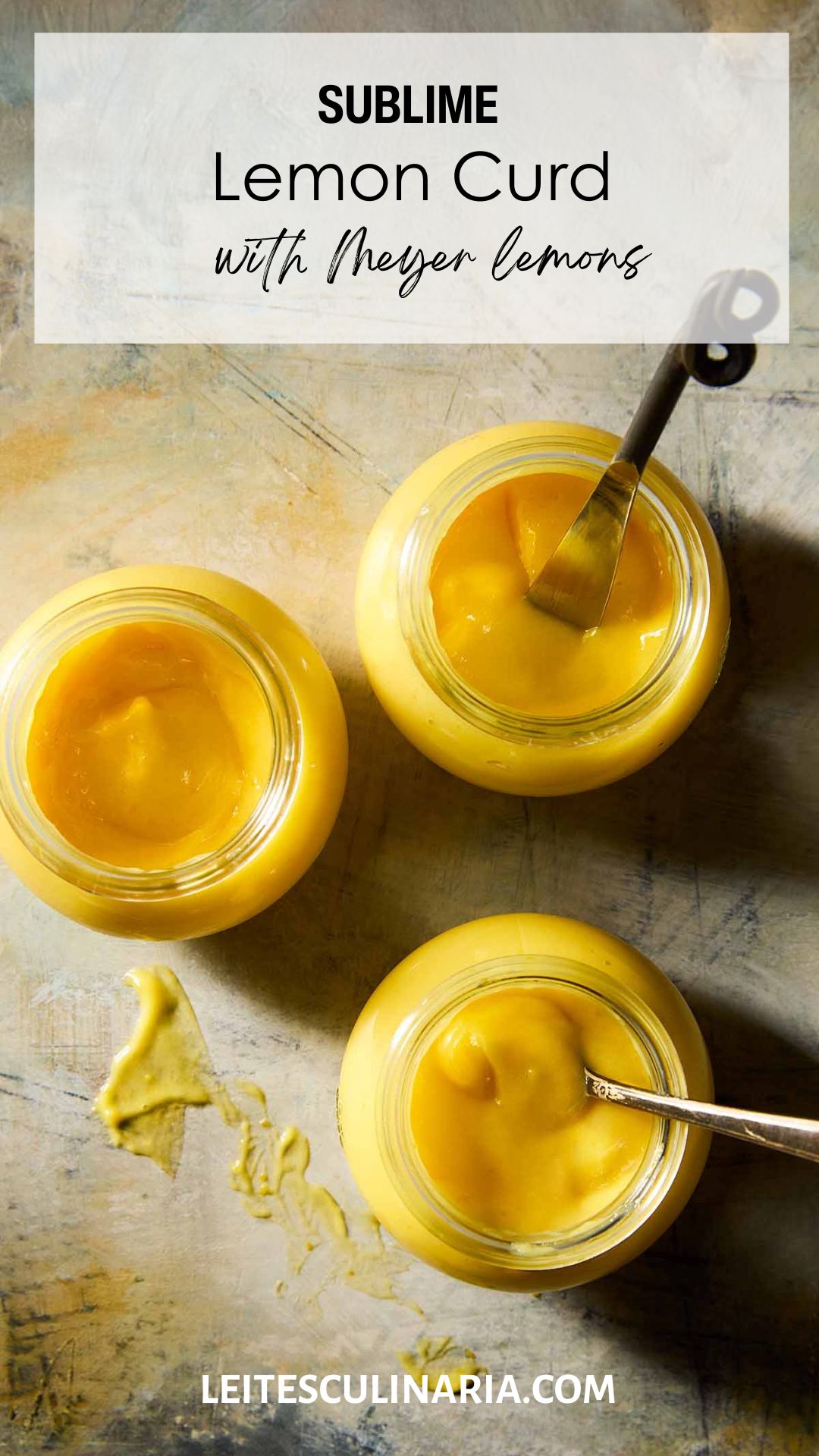




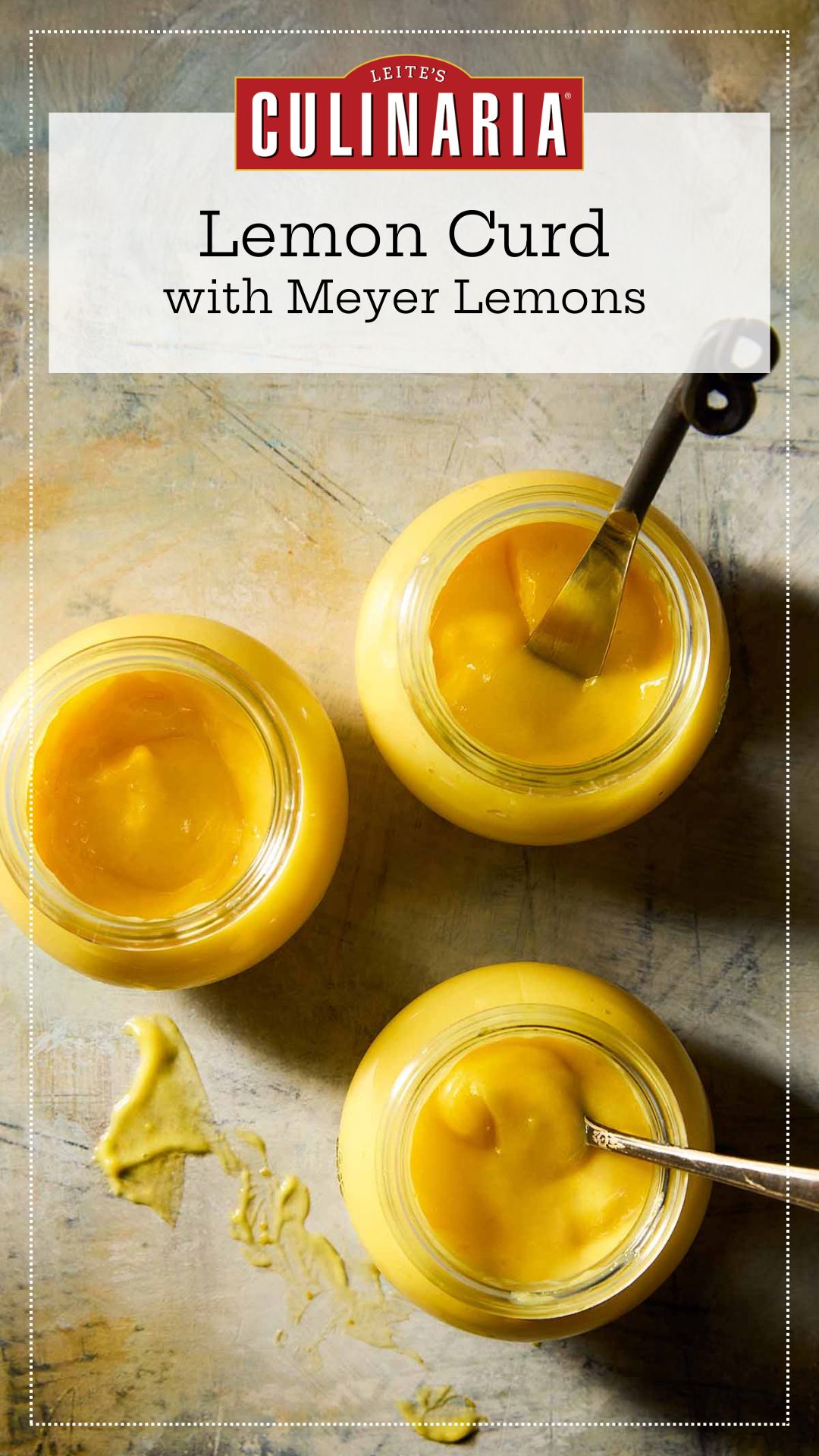



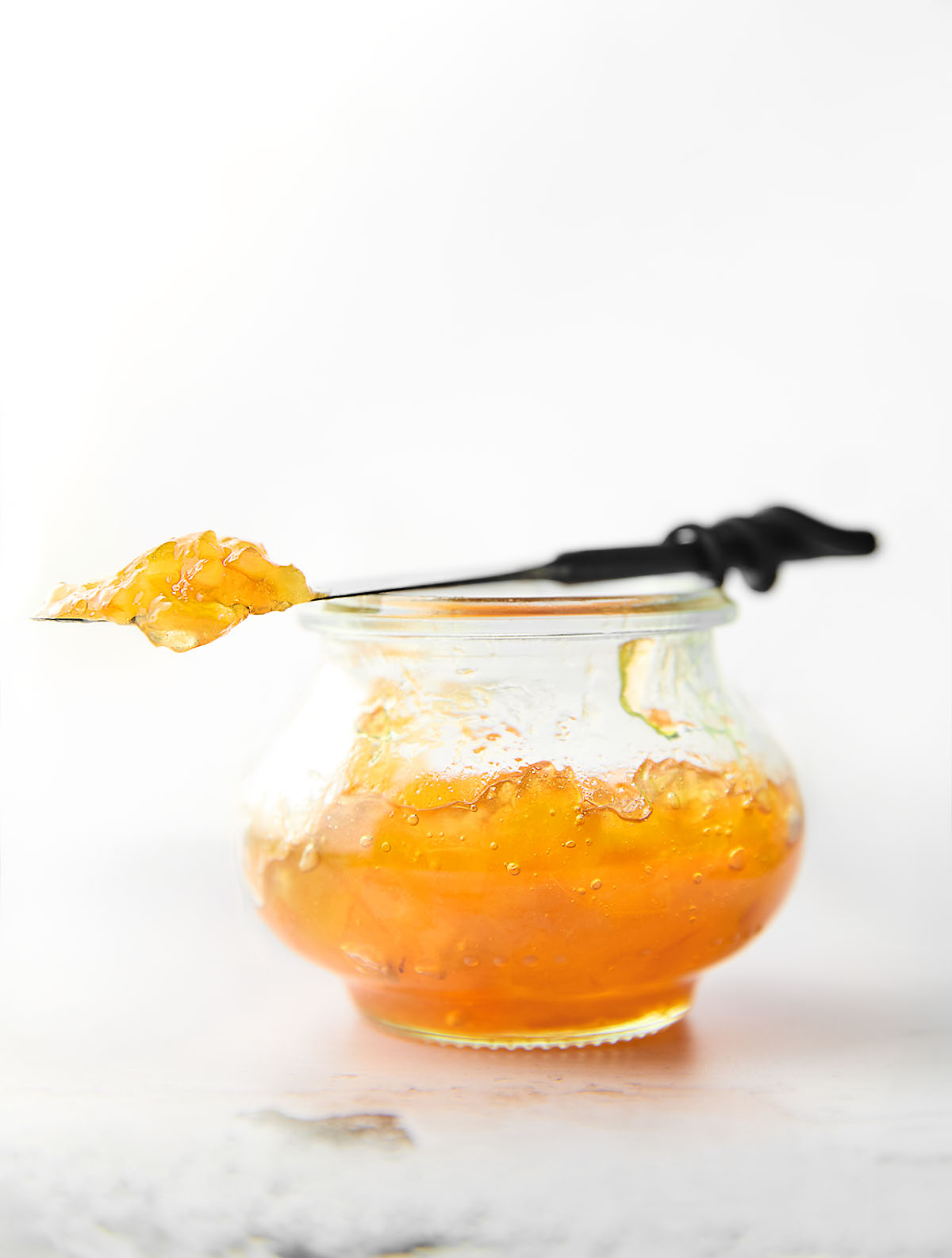











Could someone please answer the question about processing the jars and their results. I did and used the same amount of time as my regular lemon curd recipe and many jars leaked. I always use a steam canner and am very surprised by the results. The curd is delicious but I need it to be stored and not in fridge. I would think that it would spoil in the fridge after a couple of weeks.
Hi, GM. I made the curd again this past weekend, and this time I processed the jars. I used a water bath, and they were perfect; there was no leaking. I have the curd ready to be given as gifts–on the condition the jars are refrigerated and the curd is eaten within a month or so. One thing I did was tighten the rings a bit more than I would for jam because the curd is thinner. The curd will last about a week unprocessed in the fridge.
I do want to caution readers that lemons vary in acidity–and Meyer lemons are even less acidic–so canning curd is tricky. It’s suggested that if you do want to can lemon curd, you use bottled lemon juice because of the standarded acid levels. Here’s an interesting read and recipe.
I’m going to contact Diane Morgan, the author of the book, and have her jump here. I’m sure she’ll shed more light.
Thanks for the update. I am wondering if I filled them more than I should have. My curd was very thick not thin like my tried and true recipe from BA. That recipe only uses yolks. I will be interested in a response from Diane. In the meantime, I cleaned up the jars and they appear to be sealed but I put them in the fridge.
GM, that could be an issue. I know her recipe calls for a 1/2-inch headroom; most jams call for a 1/4-inch headroom. I had to spoons some out of the jars before processing, as I automatically filled them to 1/4 inch.
No Meyer lemons where I’m living now, but lemon curd is always a beautiful thing! I was once moved to compose a haiku about a jar of curd that I had made…
Ling, if you have tangerines there, replace some of the Meyer zest and juice with tangerine zest and juice, and you’ll have a close approximation.
Thanks David – will have a look at the shops and see what sort of citrus they have. Plenty of clementines now though; I’m thinking those may work?
Absolutely. The clementines, or tangerines, will sweeten up the curd nicely.
Great – thanks!!
Made this today and just shared a taste with my husband. Absolutely luscious and so much better than the jarred stuff from the grocery store. I stirred the zest into the sugar and did not strain. I plan on filling some chocolate espresso cupcakes with it tomorrow.
So glad you liked this, Lisa. It is a delicious curd!
How terrific that readers keep coming back to this divine lemon curd recipe. I must have tested 10 different lemon curds before I found the perfect texture and taste–nothing store-bought compare–if I must say so myself!
Enjoy.